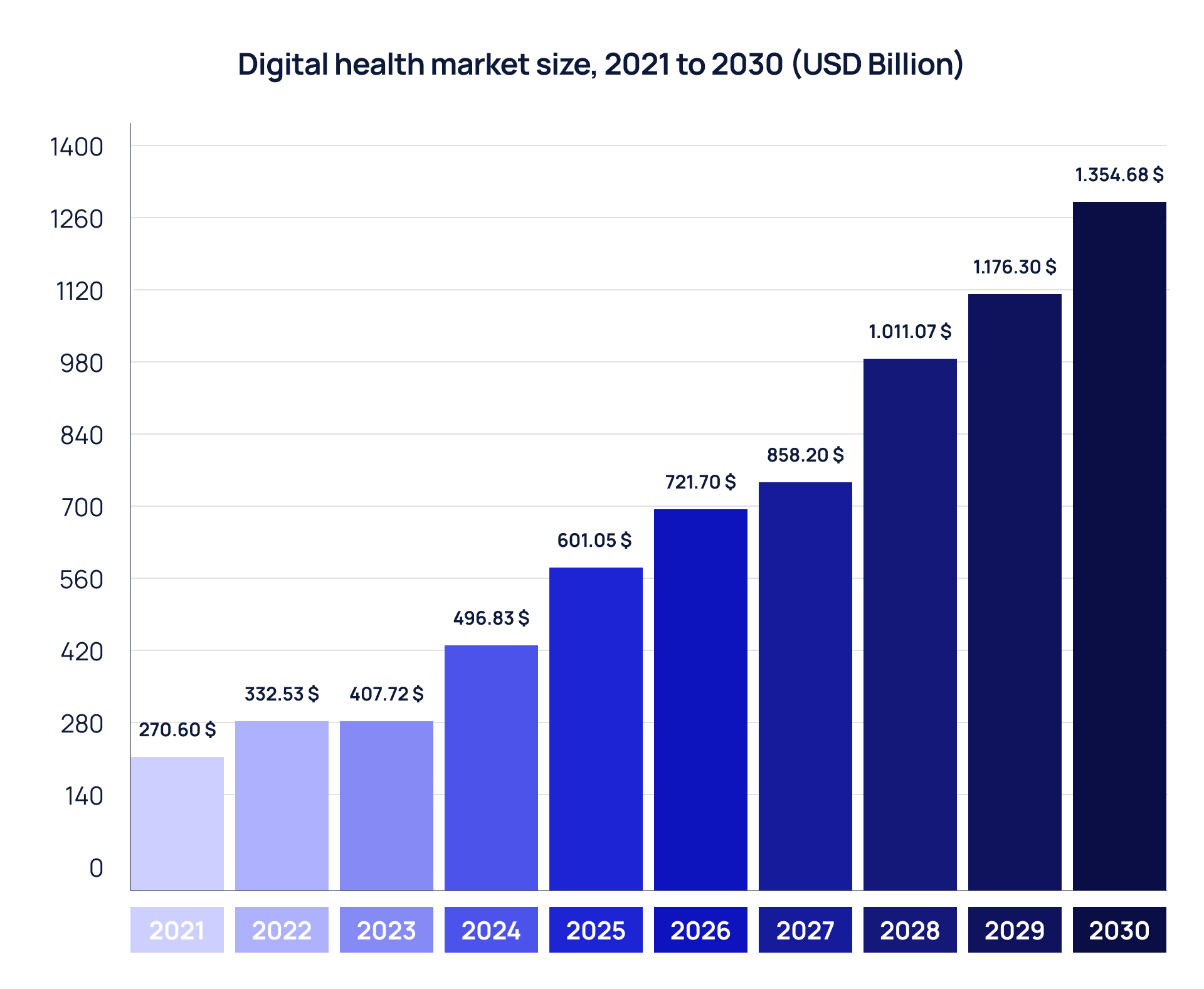How to design digital medical products: 5 best practices

How to successfully design a digital medical product? Learn the top 5 practices increasing the chances of your digital medical product succeeding
How to successfully design a digital medical product?
Over the last two years, many sectors have undergone radical changes. Whether it's automotive, retail, or even healthcare, most businesses have decided on one course: large-scale digitalization. Why? Because it's the only effective way to stay afloat and, granted the right approach, succeed. However, while some sectors, such as retail, have more or less smoothly taken this step, the healthcare sector has its own challenges: massive legacy systems, mistrust of technology on the part of medical staff, patient data security, etc. Wishing to overcome these obstacles and successfully launch, develop, and promote their online presence, healthcare companies should rely on a different approach.
Are you about to embark on digital medical product design and want to know some of the "ins and outs" of this complex process? Then, you are in the right place. The best practices described below will help you choose the suitable benchmark and, ultimately, deliver the desired solution to your audience.
5 best practices: what should you consider when developing a digital healthcare solution?
№1. Healthcare market state
eHealth has not emerged in a flash-forward. However, in recent years, concerns such as an aging society, a shortage of medical personnel, and an influx of chronic diseases have triggered the rapid adoption of technology in the medical field. In fact, the available technology offers limitless potentials. The growing number of electronic medical data, the power of AI in diagnosis and forecasting, and the creation of user-friendly mobile apps for both patients and doctors have contributed significantly to making medicine more accessible, healthcare decision-making more accurate, and remote patient-doctor communication more streamlined.
The global digital health market was estimated at $270.6 billion in 2021 and is expected to reach more than $1,354.68 billion by 2030, according to Precedence research [1].

Although your medical business can easily benefit from the market growth, the resulting intense competition can also reduce the chances of your future success. That is why it is worth paying attention to the analysis of everything that is happening in the market before you start turning your idea into reality:
The analysis is the first step among the other medical product development stages. But only a meticulous one can increase your odds of success.
№2. The users and their pain points
A doctor-patient communication app and a patient data solution differ substantially. However, what separates them the most is the type of users. Who will be using your product? Just patients? Doctors? Young professionals or all together?
Moreover, although all age groups can benefit from the digital transformation in the healthcare sector, tech products are often intended for the older generation. However, before researching your target audience's age profile, behavior, and desires, it is important to determine their greatest pain points. What worries them the most, and what can make their lives a little easier when they are dealing with medicine?
To identify their particular pain points and to learn more about your potential user, try not to ignore questionnaires, surveys, or any other kind of customer interviews. Research showed that ignoring users' expectations resulted in only 2 percent of them using hospital apps [2]. The notion that exploring the demands of patients is a futile and lengthy process is an erroneous assumption responsible for the failure of many products. Furthermore, the more you ignore the thoroughness of the research phase, the more financial resources you will forfeit in the future.
If you're more curious about the process of building a product before you start developing it directly, the Brandmed team has prepared a comprehensive guide for you — Principles of Digital Product Design for the Medical Industry.
№3. Legal and safety issues
According to the HHS' Office for Civil Rights [3], between 2009 and 2021, there were 4,419 healthcare data breaches involving 500 or more records. In addition, in 2019, one study published in the National Library of Medicine estimated that 79% of healthcare-related applications transferred data without patient approval [4].
Without providing a reliable technical basis for maintaining the confidentiality of medical data, your product is doomed to fail. Users' trust is hard to gain and easy to lose. Whether you are developing an mobile-based educational application or an online consultation solution, make sure it complies with all legal regulations.
The type of regulation often depends on the country whose residents will use your product. For instance, if your audience is US residents, then the product must comply with HIPAA; for Canadians, it must comply with PIPEDA, while for EC residents — with GDPR.
You can implement, for example, end-to-end encryption and/or multi-factor authentication features to bolster data security.
№4. Omnichannel approach
The relevance of any modern technical solution boils down to one important component — user-friendliness. It can be achieved by implementing seamless UI and UX as well as by choosing the most suitable technical base for your product. For example, Flutter, React Native, or Xamarin may be suitable for creating a cross-platform application.
By providing users with the options to access your product from any device and conveniently pay for services, you take the usefulness of your product to the next level. However, before developing a multichannel strategy, it is advisable to ask a few key questions to ensure that the multichannel way can provide the highest business value.
№ 5. Subject matter specialists
From analysis to product rollout, a dedicated team on board can facilitate every stage of digital product development. However, in addition to designers, researchers, analysts, product managers, testers, and developers, make sure that medics are also on board. Their participation is just as integral as that of the developers.
With 7+ years of experience in healthcare-focused product engineering, we have a major trump card — medically savvy experts. Together, we help projects start, grow and ultimately evolve, making the transition to digital medicine flawless. Shall we start? Then write to us.
References:
- Precedence research, Digital Health Market, https://www.precedenceresearch.com/digital-health-market, [last accessed: 12.07.2022].
- mHealth intelligence, https://mhealthintelligence.com/news/hospitals-are-missing-the-mark-on-mhealth-apps, [last accessed: 12.07.2022].
- Healthcare Data Breach Statistics, https://www.hipaajournal.com/healthcare-data-breach-statistics, [last accessed: 12.07.2022].
- Grundy Q., Chiu K., Held F., Continella A., Bero L., Holz R., Data sharing practices of medicines related apps and the mobile ecosystem: traffic, content, and network analysis, BMJ. 2019 Mar 20;364:l920, https://pubmed.ncbi.nlm.nih.gov/30894349/ [last accessed: 12.07.2022].
- The nuts and bolts of building digital healthcare products, https://www.merixstudio.com/blog/digital-healthcare-product/, [last accessed: 12.07.2022].
- Mckinsey, Omnichannel consumer interactions — a payer perspective, https://www.mckinsey.de/industries/healthcare-systems-and-services/our-insights/omnichannel-consumer-interactions-a-payer-perspective, [last accessed: 12.07.2022].
 Medical Content Creation
Medical Content Creation
 Digital Product Development
Digital Product Development
 Growth Marketing
Growth Marketing
